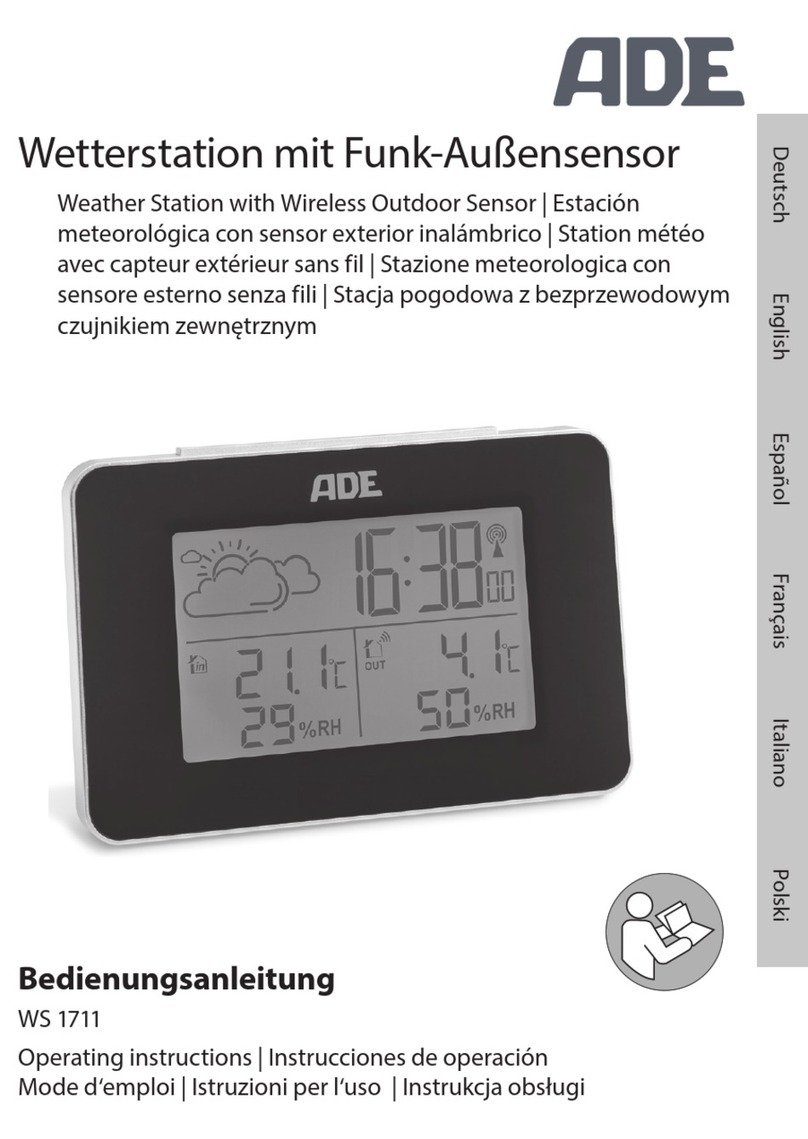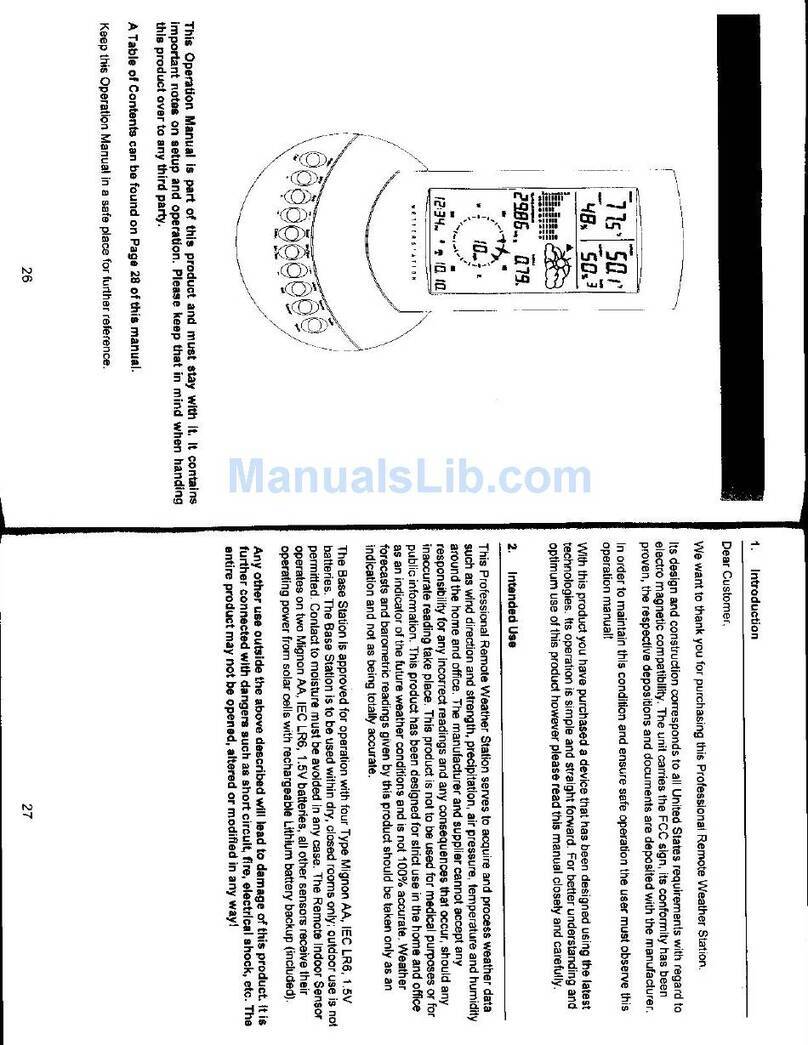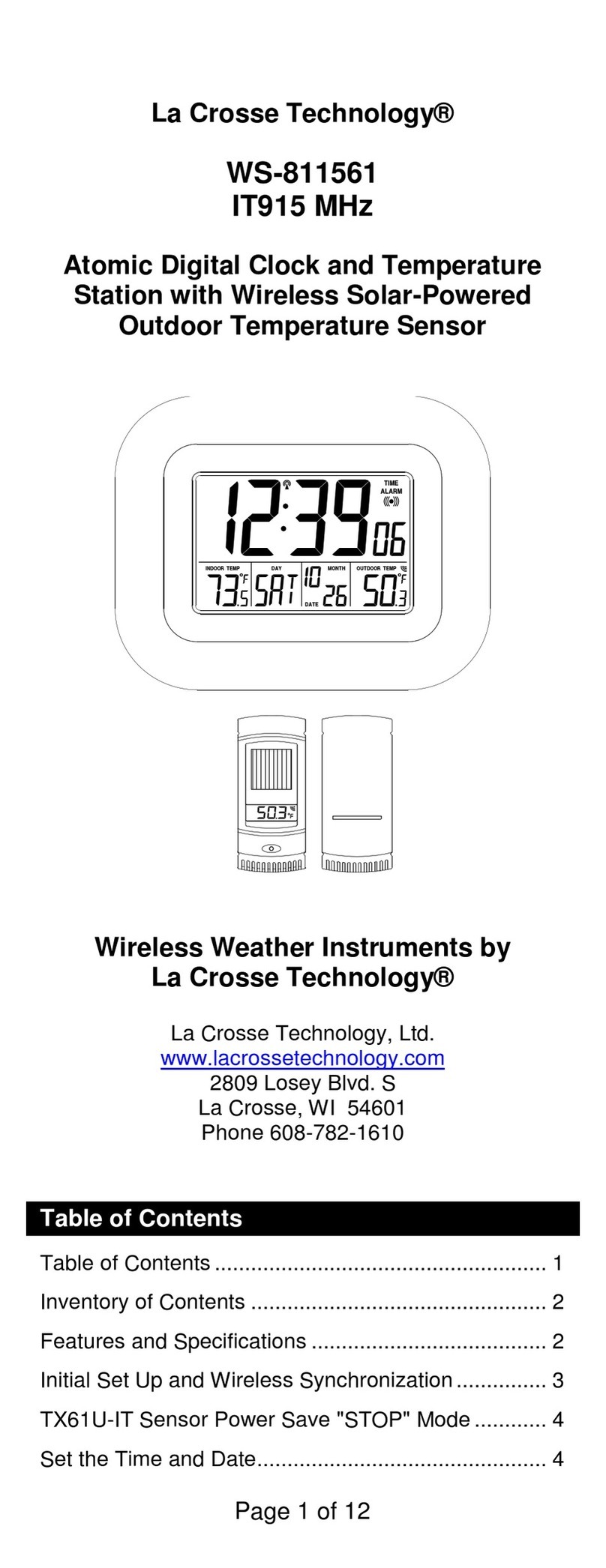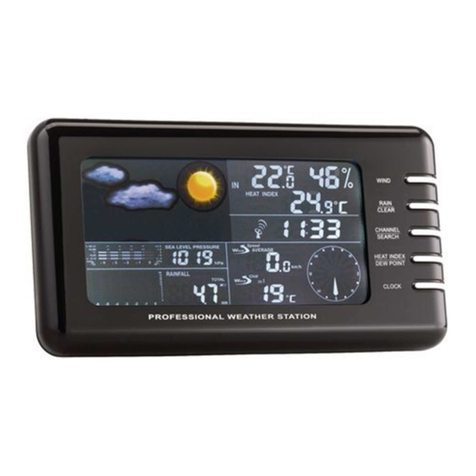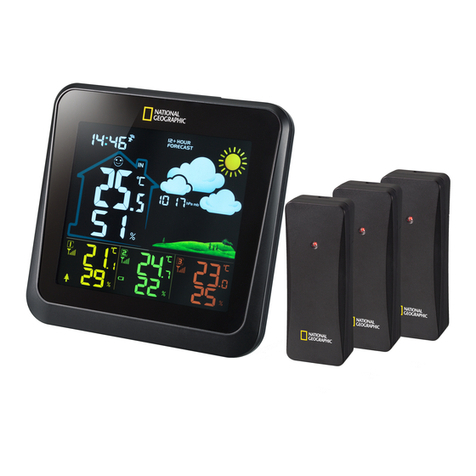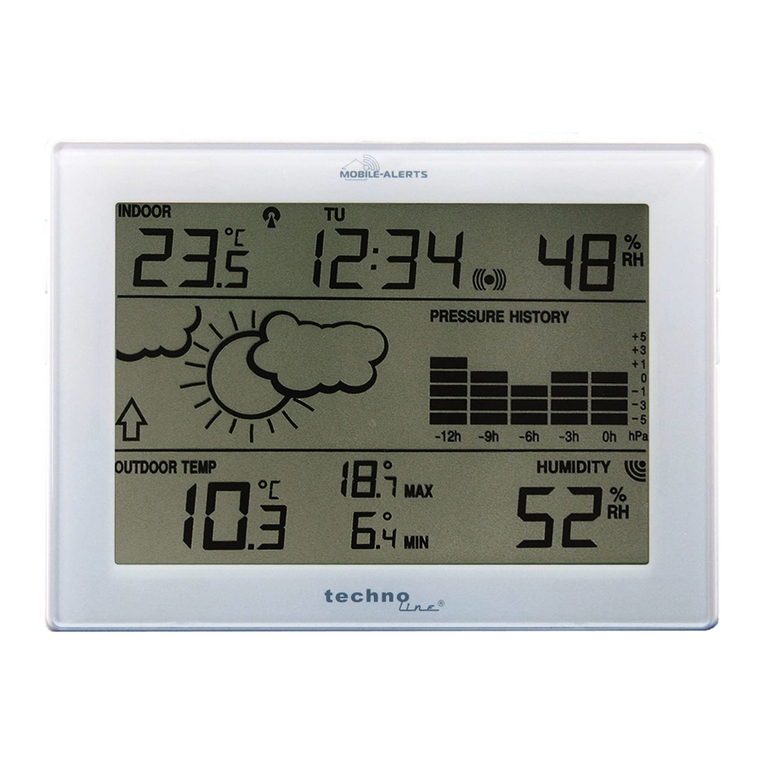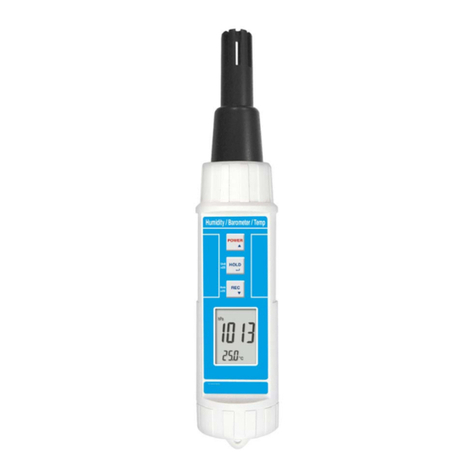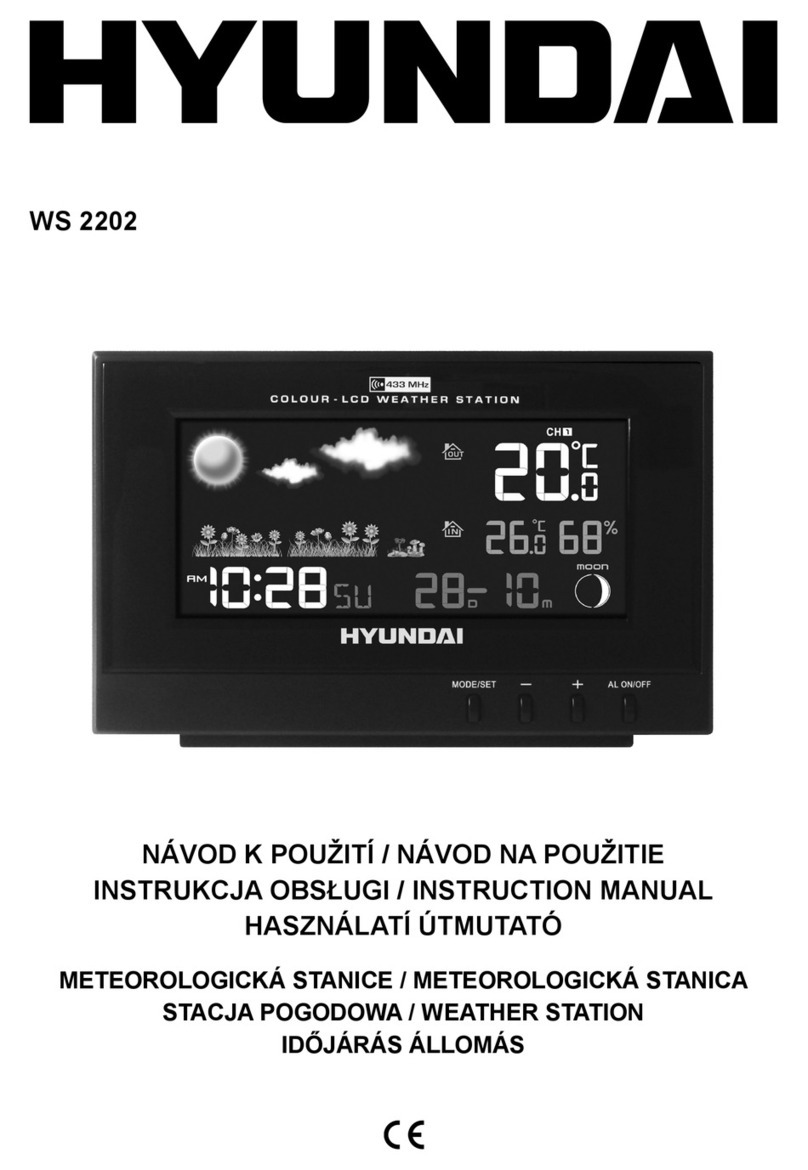
charging internal capacitors. Secondly it causes a zero reading for
wind direction to correspond to due NORTH, as is customary. This
orientation is correct for installations in the northern hemisphere. If
you are installing in the southern hemisphere, the correct orientation
to achieve the same optimal positioning is to have the “WEST”
arrow actually point due EAST! This has the side effect, however,
of lining up the 0 reading of the wind direction with SOUTH. This
needs to be corrected using a 180-degree offset in the calibration
settings.
Now look at the bubble level. The bubble should be fully inside the red
circle. If it is not, wind direction, speed, and rain readings may not operate
correctly or accurately. Adjust the mounting pipe as necessary. If the bubble
is close, but not quite inside the circle, and you cannot adjust the mounting
pipe, you may have to experiment with small wooden or heavy cardboard
shims between the sensor package and the top of the mounting pole to
achieve the desired result (this will require loosening the bolts and some
experimentation).
Make sure you check, and correct if necessary, the westerly orientation as
the final installation step, and now tighten the bolts with a wrench. Do not
over tighten, but make sure strong wind and/or rain cannot move the sensor
package.
4.1.6 Reset Button and Transmitter LED
In the event the sensor array is not transmitting, reset the sensor array.
Using a bent-open paperclip, press and hold the RESET BUTTON (see
Figure 9) to affect a reset: the LED turns on while the RESET button is
depressed, and you can now let go. The LED should then resume as normal,
flashing approximately once every 16 seconds.
